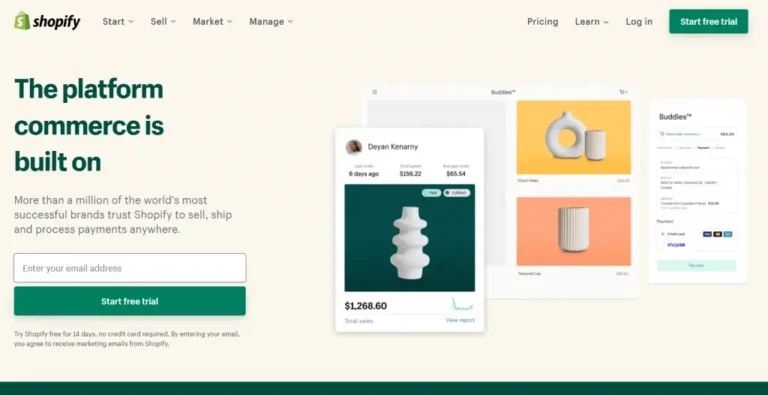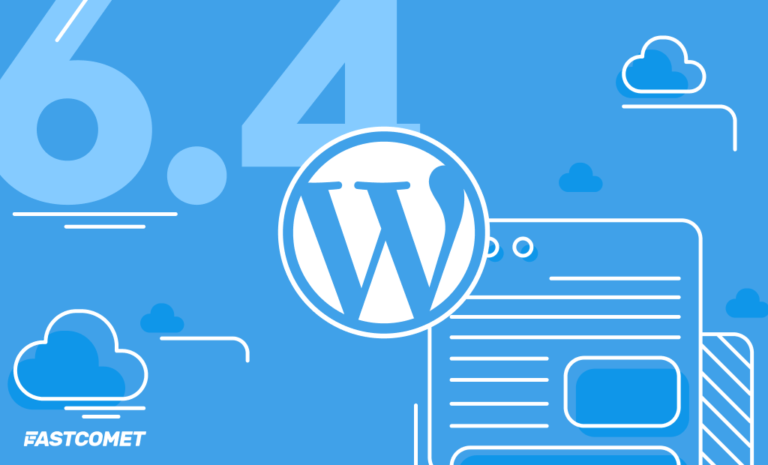Are you looking to enhance your WordPress editing experience?
Custom Gutenberg blocks can offer a unique and tailored approach to building your website.
In this article, we will provide an overview of Gutenberg blocks in WordPress, discuss the benefits of creating custom blocks, and guide you through the manual creation process using PHP.
We will introduce you to plugins such as Block Lab and Lazy Blocks that can simplify the process.
Stay tuned to learn how you can take your WordPress editing to the next level.
Key Takeaways:
Introduction
WordPress Gutenberg blocks offer a revolutionary way to enhance content creation by providing the ability to create custom blocks using JavaScript and PHP.
These blocks play a crucial role in enabling users to add various content types and functionalities to their websites through the Block Editor interface. With the flexibility to define the structure and style of each block, users can truly personalize their content creation experience. By utilizing JavaScript and PHP, developers can create intricate blocks that cater perfectly to the user’s needs and preferences.
Overview of Gutenberg Blocks in WordPress
The overview of Gutenberg blocks in WordPress showcases the versatility and flexibility of creating custom blocks for the Block Editor using JavaScript and PHP.
These custom blocks allow users to customize their content creation process according to specific needs, making it easier to design visually appealing and interactive elements on the website. Leveraging JavaScript and PHP, developers can enhance the functionality of blocks by adding dynamic features and interactive components.
Static blocks play a crucial role in maintaining consistency and standardizing certain elements across multiple pages, ensuring a cohesive design. Text elements within blocks provide the necessary content for visitors, while metadata helps in optimizing search engine visibility and improving overall user experience.
Why Create Custom Gutenberg Blocks
Creating custom Gutenberg blocks in WordPress give the power tos users to add new functionalities and unique elements to their pages, enhancing the overall user experience.
By developing custom blocks, users can tailor their websites to specific needs, incorporating brand-specific design elements and interactive features. This level of customization not only improves aesthetics but also increases engagement and user retention. Custom blocks allow for seamless integration of essential tools and services directly into the content, optimizing functionality and saving time. Through WordPress and Gutenberg’s intuitive interfaces, creating these blocks becomes a straightforward process, granting users the flexibility to shape their online presence efficiently.
Benefits of Custom Blocks for WordPress Editor
Custom blocks for the WordPress editor offer unparalleled flexibility in design and functionality, allowing users to create visually appealing and interactive content effortlessly.
One of the key advantages of using custom blocks is the ability to tailor the layout and features of each block to suit your specific needs. This level of customization give the power tos content creators to express their creativity without being limited by predefined templates.
Custom blocks can significantly enhance user engagement by providing unique interactive elements such as accordions, tabs, sliders, and more. These dynamic features not only captivate audiences but also improve the overall user experience on your WordPress site.
Manual Creation of Custom Gutenberg Blocks
The manual creation of custom Gutenberg blocks involves coding in JavaScript and PHP to develop dynamic blocks with unique functionalities, styles, and metadata.
For JavaScript, developers define the block structure, attributes, and behavior, while PHP handles server-side tasks and data processing.
Adding HTML elements strategically is crucial for block layout and content presentation. Text formatting with CSS ensures visual appeal, while dynamic styles improve interactivity.
Integrating meta boxes in PHP allows for custom fields linking to block properties, enhancing block usability and data handling.
Step 1: Developing a Plugin for Block Integration
The first step in manual block creation is to develop a custom plugin that integrates the new block functionality into the WordPress editor, ensuring seamless implementation and usage.
To begin this process, you need to first create a new folder in the wp-content/plugins directory of your WordPress installation. Once set up, you will need to define the basic block structure using JavaScript to specify attributes like title, description, icon, and category.
Next, you should enqueue the JavaScript file using the wp_enqueue_script function to ensure that the block’s functionality is correctly loaded on the editor page.
Following this, you can construct the block itself by defining its edit and save functions, providing the required logic for how the block is displayed and stored in the database. Be sure to include CSS styling to ensure the block’s appearance aligns with the rest of the editor interface.
Step 2: Block Registration and Attribute Configuration
The next crucial step involves registering the custom block and configuring attributes to define its behavior, appearance, and interaction within the WordPress editor.
In terms of block registration, the key is to specify unique identifiers, block type definitions, and render functions to make the block distinct and fully functional. These attributes play a vital role in determining how the block will behave on the frontend and backend of your website. By providing essential attributes such as block title, category, description, icon, and keywords, you can ensure that the block is easily recognizable and user-friendly.
Incorporating examples and configurations tailored to the specific block’s purpose can greatly enhance its usability. For instance, defining block styles, alignment options, color settings, and additional parameters can give users more customization options and control over the block’s appearance and functionality.
Plugins for Creating Custom Blocks
Several plugins like Block Lab and Lazy Blocks offer convenient solutions for creating custom blocks in WordPress, streamlining the development process and expanding block functionality.
These plugins provide a user-friendly interface that allows developers to design bespoke blocks without looking into complex code. With Block Lab, users can develop custom blocks with varying levels of complexity, whether it’s a simple text block or a dynamic slider. Similarly, Lazy Blocks give the power tos users with an intuitive drag-and-drop interface, making block creation a breeze and giving users the ability to create sophisticated layouts effortlessly.
Block Lab
Block Lab is a versatile plugin that enables users to create custom blocks effortlessly, providing a user-friendly interface and robust functionality for block customization.
One of the key features of Block Lab is its intuitively designed user interface, which makes the block creation process seamless even for those with minimal coding experience. Users can easily drag and drop elements, adjust settings, and preview their custom blocks in real-time, ensuring a smooth and efficient workflow. The flexibility in block design allows creators to bring their unique visions to life without constraints, whether it’s for a simple text block or a complex interactive element.
Lazy Blocks
Lazy Blocks is another popular plugin choice for creating custom blocks in WordPress, offering intuitive block creation tools and seamless integration with the Block Editor.
One of the standout features of Lazy Blocks is its user-friendly interface that allows users to create custom blocks with ease. With drag-and-drop functionality, users can effortlessly design unique blocks without the need for extensive coding knowledge. This makes it a fantastic option for both beginners and experienced developers looking to enhance their WordPress websites.
Additionally, Lazy Blocks seamlessly integrates with the WordPress Block Editor, providing a smooth workflow for block creation and customization. This level of integration ensures that custom blocks created with Lazy Blocks are fully compatible with the WordPress ecosystem, allowing users to leverage the full power of the platform.
The versatility of Lazy Blocks enables users to create a wide range of custom blocks to suit their specific needs. Whether it’s a simple text block or a more complex interactive element, Lazy Blocks provides the flexibility to bring your creative visions to life within the WordPress editor.
Conclusion
The integration of custom Gutenberg blocks in WordPress opens up a new realm of possibilities for content creators, enabling them to craft engaging and interactive content seamlessly.
These custom blocks offer a wide range of functionalities that go beyond traditional content elements, give the power toing users to create visually appealing layouts with ease. With options like static blocks, users can easily include dynamic text elements, multimedia content, and even metadata to enhance the overall user experience.
- Static blocks play a crucial role in maintaining consistency across a website by allowing users to create reusable content segments. This feature streamlines content creation and editing processes, saving time and effort.
- By incorporating various text elements within Gutenberg blocks, such as headings, paragraphs, and lists, creators have the flexibility to structure their content effectively, improving readability and engagement.
- The ability to add metadata to blocks ensures that content is well-optimized for search engines, enhancing discoverability and improving SEO performance.
Next Steps
As you delve deeper into the world of custom Gutenberg blocks, consider exploring advanced functionalities, incorporating dynamic elements, and optimizing block performance for enhanced user engagement.
One way to elevate your custom Gutenberg blocks is by leveraging the power of dynamic elements such as interactive animations, conditional displays, or live data integration. These elements not only enhance the visual appeal but also add a layer of interactivity that can significantly improve user experience.
To ensure optimal performance, delve into performance optimization techniques like lazy loading, asset minification, caching strategies, and code efficiency. By fine-tuning these aspects, you can create Gutenberg blocks that load quickly and seamlessly, even on high-traffic websites.
Engage in the Discussion and Learn More
Engage in insightful discussions and expand your knowledge further by exploring dynamic blocks, advanced configurations, and real-world case studies to enhance your expertise in custom Gutenberg block development.
By looking into the intricacies of dynamic blocks, you can uncover innovative ways to engage users and enhance the functionality of your website. Experimenting with advanced configurations allows you to tailor the blocks to meet specific requirements, offering a personalized user experience.
Real-world case studies provide valuable insights into successful implementation strategies and potential challenges encountered in block development projects. Leveraging these resources can broaden your understanding and skills, setting you apart as a proficient Gutenberg block developer.
Frequently Asked Questions
What is PHP and how is it used to create custom WordPress Gutenberg blocks?
PHP is a server-side scripting language commonly used for web development. It can be used to create custom code for WordPress websites, including creating custom Gutenberg blocks. These blocks allow for more dynamic and customizable layouts and functionality within the WordPress editor.
What are WordPress Gutenberg blocks?
WordPress Gutenberg blocks are individual pieces of content or design elements that can be added to a page or post using the WordPress Gutenberg editor. These blocks can be custom created using PHP code to add unique features and functionality to a website.
Do I need to know PHP to create custom WordPress Gutenberg blocks?
Yes, a basic understanding of PHP is necessary to create custom Gutenberg blocks. You will need to write the code for the block itself, as well as the accompanying JavaScript and CSS to make it function and look the way you want.
Are there any tutorials or resources available for learning how to create custom Gutenberg blocks using PHP?
Yes, there are many tutorials and resources available online for learning how to create custom Gutenberg blocks using PHP. Some popular ones include the official WordPress developer documentation, tutorials on websites such as WPMU DEV and WPBeginner, and YouTube tutorials from experienced developers.
Can I use existing PHP code to create custom WordPress Gutenberg blocks?
Yes, you can use existing PHP code to create custom Gutenberg blocks. You may need to modify the code slightly to fit the block structure and requirements, but it can save you time and effort in creating new code from scratch.
Are there any limitations to using PHP to create custom WordPress Gutenberg blocks?
While PHP is a powerful tool for creating custom Gutenberg blocks, there are some limitations to keep in mind. These include the need for a basic understanding of the language, potential conflicts with other plugins or themes, and the possibility of slower page loading times if the code is not optimized.





